-
 Bitcoin
Bitcoin $115100
-3.07% -
 Ethereum
Ethereum $3649
0.37% -
 XRP
XRP $3.070
-0.95% -
 Tether USDt
Tether USDt $0.0000
-0.06% -
 BNB
BNB $763.2
-0.11% -
 Solana
Solana $177.3
-4.69% -
 USDC
USDC $0.9998
-0.01% -
 Dogecoin
Dogecoin $0.2262
-4.01% -
 TRON
TRON $0.3142
1.79% -
 Cardano
Cardano $0.7908
-1.25% -
 Hyperliquid
Hyperliquid $42.20
-1.13% -
 Stellar
Stellar $0.4137
-2.00% -
 Sui
Sui $3.652
-1.36% -
 Chainlink
Chainlink $17.52
-2.20% -
 Bitcoin Cash
Bitcoin Cash $528.9
5.25% -
 Hedera
Hedera $0.2374
-1.84% -
 Avalanche
Avalanche $23.13
-1.71% -
 Litecoin
Litecoin $111.1
-2.30% -
 UNUS SED LEO
UNUS SED LEO $8.974
-0.31% -
 Shiba Inu
Shiba Inu $0.00001333
-1.46% -
 Toncoin
Toncoin $3.102
-1.04% -
 Ethena USDe
Ethena USDe $1.001
-0.05% -
 Uniswap
Uniswap $10.03
-0.76% -
 Polkadot
Polkadot $3.934
-1.93% -
 Monero
Monero $322.4
1.19% -
 Dai
Dai $1.000
0.01% -
 Bitget Token
Bitget Token $4.459
-2.45% -
 Pepe
Pepe $0.00001205
-4.02% -
 Aave
Aave $288.3
0.36% -
 Cronos
Cronos $0.1291
3.50%
How to set the level of WMA in the moving average system? How to combine 5-day/10-day/20-day WMA?
WMAs assign higher weights to recent data, aiding quick trend identification in volatile crypto markets; combine 5-day, 10-day, and 20-day WMAs for effective trading.
May 27, 2025 at 09:00 pm
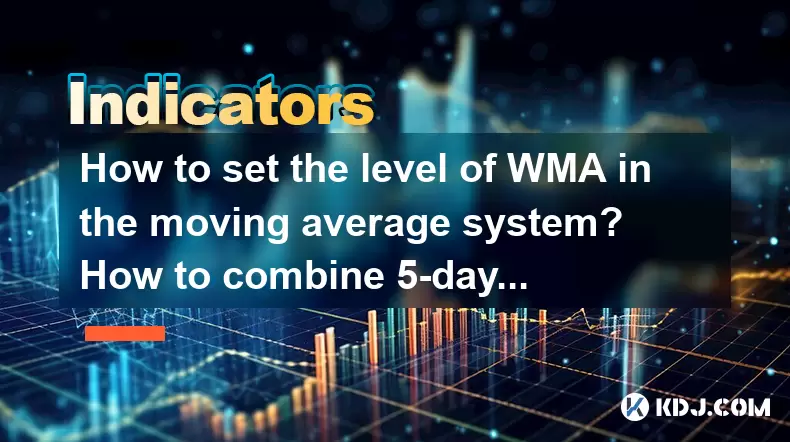
Introduction to Weighted Moving Averages (WMA)
Weighted Moving Averages (WMA) are a type of moving average that assigns a higher weighting to more recent data points, making them more responsive to new information than simple moving averages. In the world of cryptocurrency trading, WMAs can be crucial for identifying trends and making informed trading decisions. This article will guide you through setting the level of WMA in your moving average system and combining 5-day, 10-day, and 20-day WMAs effectively.
Understanding WMA and Its Importance in Cryptocurrency Trading
Before diving into setting up and combining WMAs, it's essential to understand why they are valuable in cryptocurrency trading. WMAs give more weight to recent prices, which can help traders identify trends more quickly than with simple moving averages. This feature makes them particularly useful in the volatile cryptocurrency market, where timely decisions can lead to significant gains or losses.
Setting the Level of WMA in Your Moving Average System
To set the level of WMA in your moving average system, you need to follow a series of steps that involve selecting the right timeframe and calculating the weights for each data point. Here's how you can do it:
- Choose the Timeframe: Decide on the period over which you want to calculate the WMA. For example, if you're looking at a 10-day WMA, you will use the prices of the last 10 days.
- Assign Weights: Assign higher weights to more recent data points. The most common method is to assign weights in a linear fashion, where the most recent day gets the highest weight, and the weight decreases linearly for each preceding day.
- Calculate the WMA: Multiply each data point by its corresponding weight, sum these products, and then divide by the total of the weights.
For a 10-day WMA, the formula would look like this:
[ \text{WMA} = \frac{10 \times P_1 + 9 \times P_2 + 8 \times P3 + ... + 1 \times P{10}}{55} ]
Where ( P_1 ) is the price of the most recent day, ( P_2 ) is the price of the second most recent day, and so on. The denominator (55) is the sum of the weights (10 + 9 + 8 + ... + 1).
Combining 5-day, 10-day, and 20-day WMAs
Combining different WMAs can provide a more comprehensive view of the market trends. Here's how you can effectively combine 5-day, 10-day, and 20-day WMAs:
- Plot the WMAs on a Chart: Start by plotting the 5-day, 10-day, and 20-day WMAs on the same chart. This will help you visualize how these different timeframes interact with each other.
- Identify Crossovers: Look for points where the shorter-term WMA (5-day) crosses over the longer-term WMAs (10-day and 20-day). A crossover above the longer-term WMA can signal a bullish trend, while a crossover below can indicate a bearish trend.
- Confirm Trends: Use the 20-day WMA as a trend confirmation tool. If the 5-day and 10-day WMAs are both above the 20-day WMA, it suggests a strong bullish trend. Conversely, if both are below the 20-day WMA, it suggests a strong bearish trend.
Practical Example of Combining WMAs in Cryptocurrency Trading
Let's consider a practical example of how you might use these WMAs to make trading decisions in the cryptocurrency market:
- Scenario: You are tracking the price of Bitcoin (BTC).
- Data: You have the closing prices of BTC for the past 20 days.
- Step 1: Calculate the 5-day, 10-day, and 20-day WMAs using the method described above.
- Step 2: Plot these WMAs on a chart.
- Step 3: Observe the crossovers. For instance, if the 5-day WMA crosses above the 10-day WMA and both are above the 20-day WMA, this could be a strong buy signal.
- Step 4: Monitor the trends. If the 5-day WMA remains above the 10-day WMA, and both stay above the 20-day WMA, continue to hold or consider adding to your position. If the 5-day WMA crosses below the 10-day WMA, it might be time to consider selling or taking profits.
Adjusting WMA Settings for Different Cryptocurrencies
Different cryptocurrencies may require different WMA settings due to their unique volatility and trading volumes. Here's how you can adjust your WMA settings:
- Volatility: For highly volatile cryptocurrencies, you might want to use shorter timeframes (e.g., 3-day or 5-day WMAs) to capture rapid price movements.
- Trading Volume: Cryptocurrencies with lower trading volumes might benefit from longer timeframes (e.g., 20-day or 30-day WMAs) to smooth out the noise in the data.
- Experiment and Backtest: Always experiment with different WMA settings and backtest them against historical data to see which combination works best for the specific cryptocurrency you are trading.
FAQs
Q1: Can I use WMA for all types of cryptocurrencies?
A1: Yes, you can use WMA for all types of cryptocurrencies, but you should adjust the settings based on the specific characteristics of each cryptocurrency, such as volatility and trading volume.
Q2: How often should I update my WMA calculations?
A2: You should update your WMA calculations daily or at the end of each trading session to ensure you have the most current data for making trading decisions.
Q3: What are the potential pitfalls of using WMAs in cryptocurrency trading?
A3: One potential pitfall is the risk of false signals, especially in highly volatile markets. Additionally, relying solely on WMAs without considering other indicators and market conditions can lead to poor trading decisions.
Q4: Can I combine WMAs with other technical indicators?
A4: Yes, combining WMAs with other technical indicators, such as the Relative Strength Index (RSI) or the Moving Average Convergence Divergence (MACD), can provide a more robust trading strategy by confirming signals and reducing the risk of false positives.
Disclaimer:info@kdj.com
The information provided is not trading advice. kdj.com does not assume any responsibility for any investments made based on the information provided in this article. Cryptocurrencies are highly volatile and it is highly recommended that you invest with caution after thorough research!
If you believe that the content used on this website infringes your copyright, please contact us immediately (info@kdj.com) and we will delete it promptly.
- StablecoinX's $360 Million Bet: Forging the Ethena Treasury
- 2025-07-25 15:30:12
- Ethereum's Wild Ride: Navigating Volatility and New Risks
- 2025-07-25 15:10:12
- Ethereum Inflows Outpace Bitcoin Outflows: Institutional Adoption Heats Up
- 2025-07-25 15:30:12
- XRP, Ripple, and Liquidations: Navigating the Crypto Turbulence
- 2025-07-25 15:35:12
- Ethereum vs. Bitcoin: Galaxy CEO Novogratz Weighs In
- 2025-07-25 15:35:12
- Ethereum, Injective, and Tokenizing Treasuries: A New Era for Corporate Finance
- 2025-07-25 15:40:12
Related knowledge
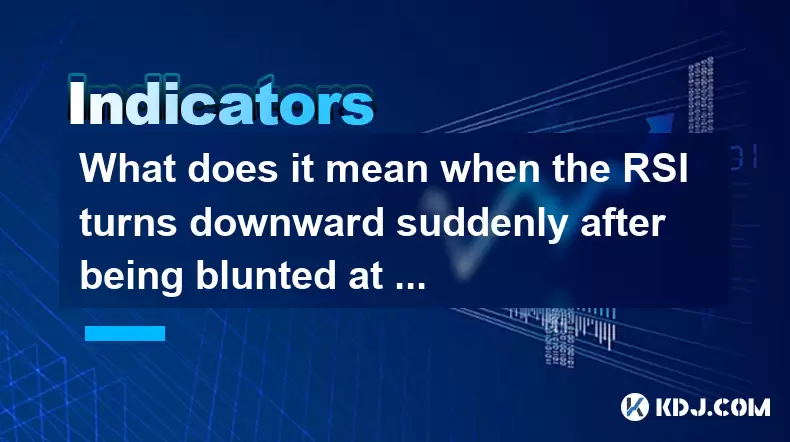
What does it mean when the RSI turns downward suddenly after being blunted at a high level?
Jul 25,2025 at 04:00pm
Understanding the RSI and Its Role in Technical AnalysisThe Relative Strength Index (RSI) is a momentum oscillator that measures the speed and change ...
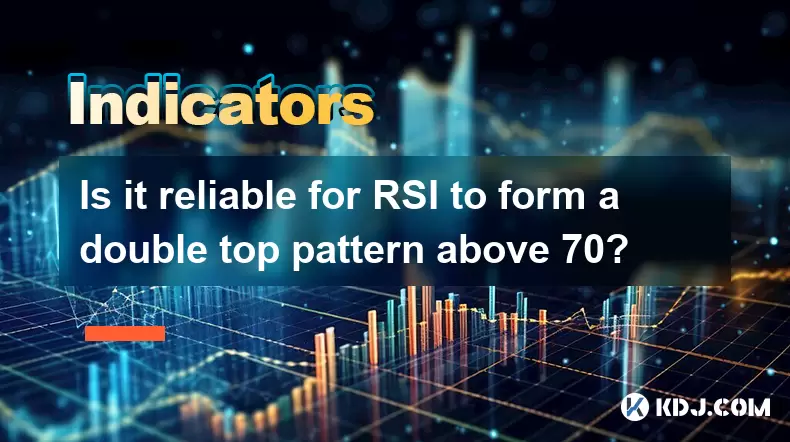
Is it reliable for RSI to form a double top pattern above 70?
Jul 25,2025 at 04:49pm
Understanding the RSI Indicator and Its Role in Technical AnalysisThe Relative Strength Index (RSI) is a momentum oscillator that measures the speed a...
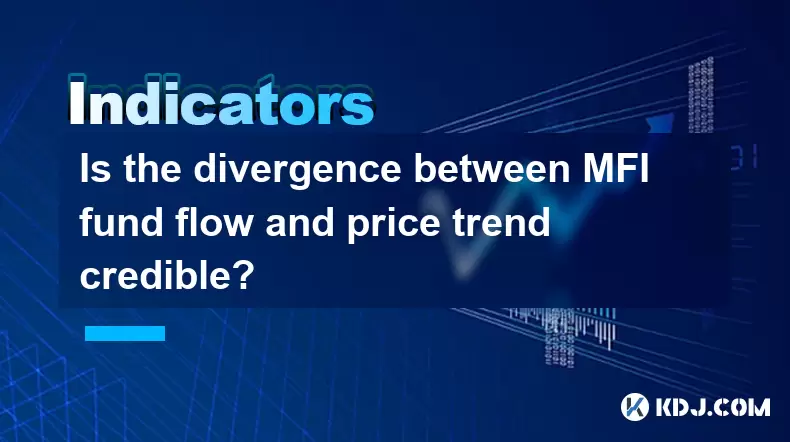
Is the divergence between MFI fund flow and price trend credible?
Jul 25,2025 at 12:01pm
Understanding MFI and Fund Flow in Cryptocurrency MarketsThe Money Flow Index (MFI) is a technical oscillator that combines price and volume to assess...
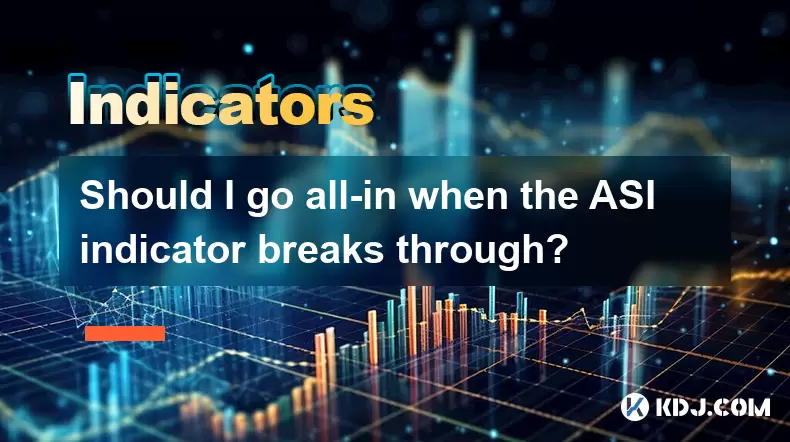
Should I go all-in when the ASI indicator breaks through?
Jul 25,2025 at 01:56pm
Understanding the ASI Indicator and Its SignificanceThe Accumulation Swing Index (ASI) is a technical analysis tool developed by Welles Wilder, the sa...

Should I go all in when DIF crosses DEA?
Jul 25,2025 at 12:42am
Understanding DIF and DEA in MACD AnalysisWhen traders analyze DIF and DEA in the context of the Moving Average Convergence Divergence (MACD) indicato...

Should I go all in when the upper edge of the box is broken?
Jul 25,2025 at 01:50am
Understanding the 'Box' in Cryptocurrency Price ChartsThe term 'box' in cryptocurrency trading typically refers to a price consolidation range where t...

What does it mean when the RSI turns downward suddenly after being blunted at a high level?
Jul 25,2025 at 04:00pm
Understanding the RSI and Its Role in Technical AnalysisThe Relative Strength Index (RSI) is a momentum oscillator that measures the speed and change ...

Is it reliable for RSI to form a double top pattern above 70?
Jul 25,2025 at 04:49pm
Understanding the RSI Indicator and Its Role in Technical AnalysisThe Relative Strength Index (RSI) is a momentum oscillator that measures the speed a...

Is the divergence between MFI fund flow and price trend credible?
Jul 25,2025 at 12:01pm
Understanding MFI and Fund Flow in Cryptocurrency MarketsThe Money Flow Index (MFI) is a technical oscillator that combines price and volume to assess...

Should I go all-in when the ASI indicator breaks through?
Jul 25,2025 at 01:56pm
Understanding the ASI Indicator and Its SignificanceThe Accumulation Swing Index (ASI) is a technical analysis tool developed by Welles Wilder, the sa...

Should I go all in when DIF crosses DEA?
Jul 25,2025 at 12:42am
Understanding DIF and DEA in MACD AnalysisWhen traders analyze DIF and DEA in the context of the Moving Average Convergence Divergence (MACD) indicato...

Should I go all in when the upper edge of the box is broken?
Jul 25,2025 at 01:50am
Understanding the 'Box' in Cryptocurrency Price ChartsThe term 'box' in cryptocurrency trading typically refers to a price consolidation range where t...
See all articles

























































































